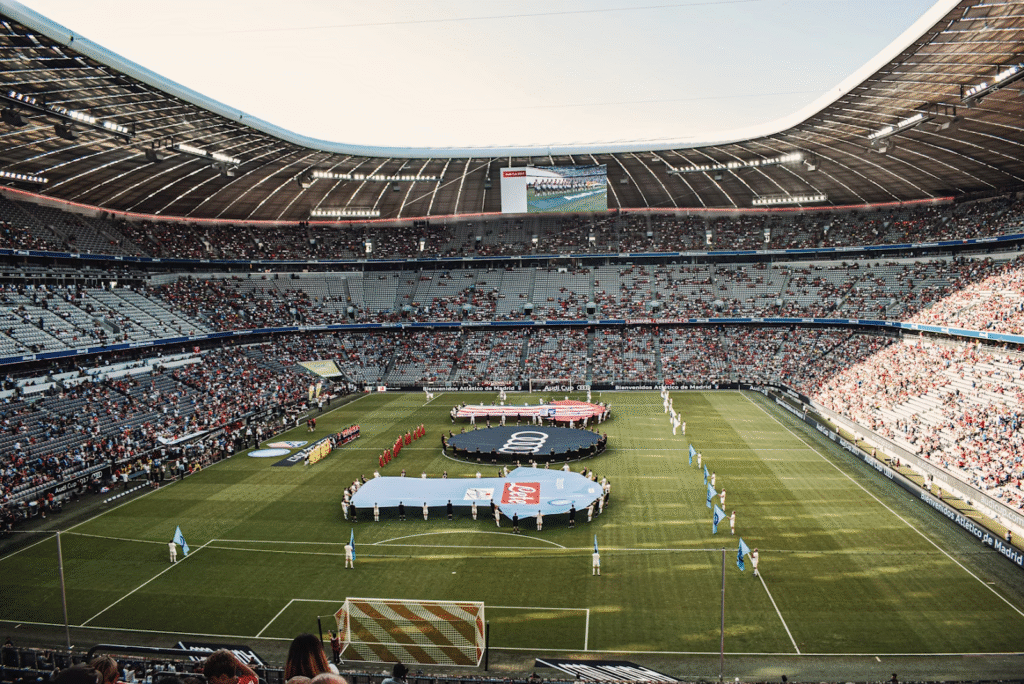
Home advantage has never been a non-factor in football, but during the 2015-2025 period, there was a notable shift in its betting value. The win rates and profitability patterns differed across the five most popular European leagues (Premier League, La Liga, Bundesliga, Serie A, and Ligue 1). The short-term patterns were redefined during the pandemic, with empty stadiums reducing home returns, and later travel and scheduling pressures restored them. To bettors, it has become important to understand the ROI in simple 1X2 and Asian handicap markets. Following these changes will highlight where the value of home advantage can still be found in betting strategies.
Home Advantage Trends Across Leagues
Over the years 2015–2020, home teams had a win rate of around 46 percent in the European elite leagues, with Germany recording the lowest score. Many fans tracking online betting trends noticed how away sides in the Bundesliga often flourished, while Serie A and La Liga maintained stronger home numbers. Restrictions during the pandemic disrupted those patterns, dropping win rates to 43–44 percent in fanless seasons by 2021.
When fans came back home, the home advantage recovered. Serie A and Ligue 1 improved more towards pre-pandemic values, whereas the Premier League was flatter. Better ROI reflected these changes, which rewarded individuals who monitored annual changes. Home dominance is not the same as before, and league-specific data is important to seek out value betting angles.
ROI in 1X2 vs. Asian Handicap
To bettors, the nature of the market is as significant as the league itself. The numbers testify to the idea that returns on home advantage have never been homogeneous. Others favoured sustained support, and others castigated blind loyalty to the home team.
The ROI varies, based on the betting market:
- Ligue 1 home wins (2017–2019): +2% ROI.
- Premier League home wins (2015–2020): –3% ROI.
- Home handicaps Bundesliga (2016-2018): +1.5% ROI.
The reduction of profitability through the closure of gaps by bookmakers after 2020 does not eliminate situational opportunities. Even punters who rely on fatigue of travellers, congestion of games or matches in the middle of the table, end up discovering value. It is no longer a sure thing that simple averages will yield returns, but it can be an informed selection.
Factors Affecting Market ROI
Market ROI of football betting is moulded by several external aspects other than the quality of the raw teams. Outcomes are affected by stadium attendance, travel exhaustion, and match timetable. The data indicate that there were evident shifts in ROI trends between 2015 and 2025; specifically, the data focused on the crowd size or travel distances. Situational patterns can still be seen as bookmakers have adjusted margins. Bettors who follow these measures tend to have an advantage. These conditions are important to understand when comparing simple 1X2 results with Asian handicap results of the five leading leagues.
Impact of Stadium Attendance
The presence of crowds has never been irrelevant to matches. Between 2015 and 2019, the average rate of home wins in the Premier League was 46, and packed stadiums pushed the trend. Analysts studying fan impact and MelBet ID statistics also highlighted how atmosphere influenced betting behaviour. In the 2020 pandemic season, the absence of fans reduced that number to 41 percent, eliminating most home-field advantages. Bookmakers soon evolved, trimming live ROI prospects.
Win rates bounced back, though not to full in 2021 when fans returned, remaining around 44% in a number of leagues. This demonstrates that atmosphere is considered, but betting models are made. Attendance is a variable used by betters, and they experienced stronger returns during the recovery years, particularly in Ligue 1 and Serie A.

Travel and Scheduling Pressures
Travel fatigue has an impact on ROI. Bundesliga teams with a minimum of 400 km away lost half of the games in the period between 2016 and 2019. Compelled timetables in 2021 also decreased the efficiency of away teams, decreasing the win rates in the Spanish La Liga.
Such pressures enabled the bettors to take advantage of the Asian handicap lines. Three-match clubs played in eight days had ROI negatives in 70% of the cases. Travel and congestion are important considerations, especially in betting markets, where bookmakers underprice fatigue relative to form or injury.
Bookmaker Adjustments Post-2020
Following 2020, bookmakers were more price-conscious in regard to home advantage. The pandemic took the influence of crowds away, and stadiums were filled with empty seats, and the markets responded almost immediately. Home win rates decreased in all five leagues, and the ROI of blind 1X2 bets vanished. Bookmakers refined the Asian handicap lines to make them leaner to minimize the inefficiencies that bettors were previously capitalizing on.
Nevertheless, modifications were not impeccable. In 2021, there were 47% wins among Serie A clubs in home matches, but they were underestimated by models in tight matches. Better that tracked rotation, travel distance, and fatigue continued to cut situational profits. This time demonstrated that, despite the reduction in margins, there were still situations in which disciplined bettors could see value.
Future of Betting on Home Advantage
Since 2025, punters will be more inclined to use data-driven information: travel loads, recovery time, and attendance swings. Home edge will never disappear, but profit is precision rather than averages.
